Resources
Here you can search external resources from STOP Spillover's experts (tagged in blue) and resources developed by the STOP Spillover project (tagged in red).
We found 142 resources.
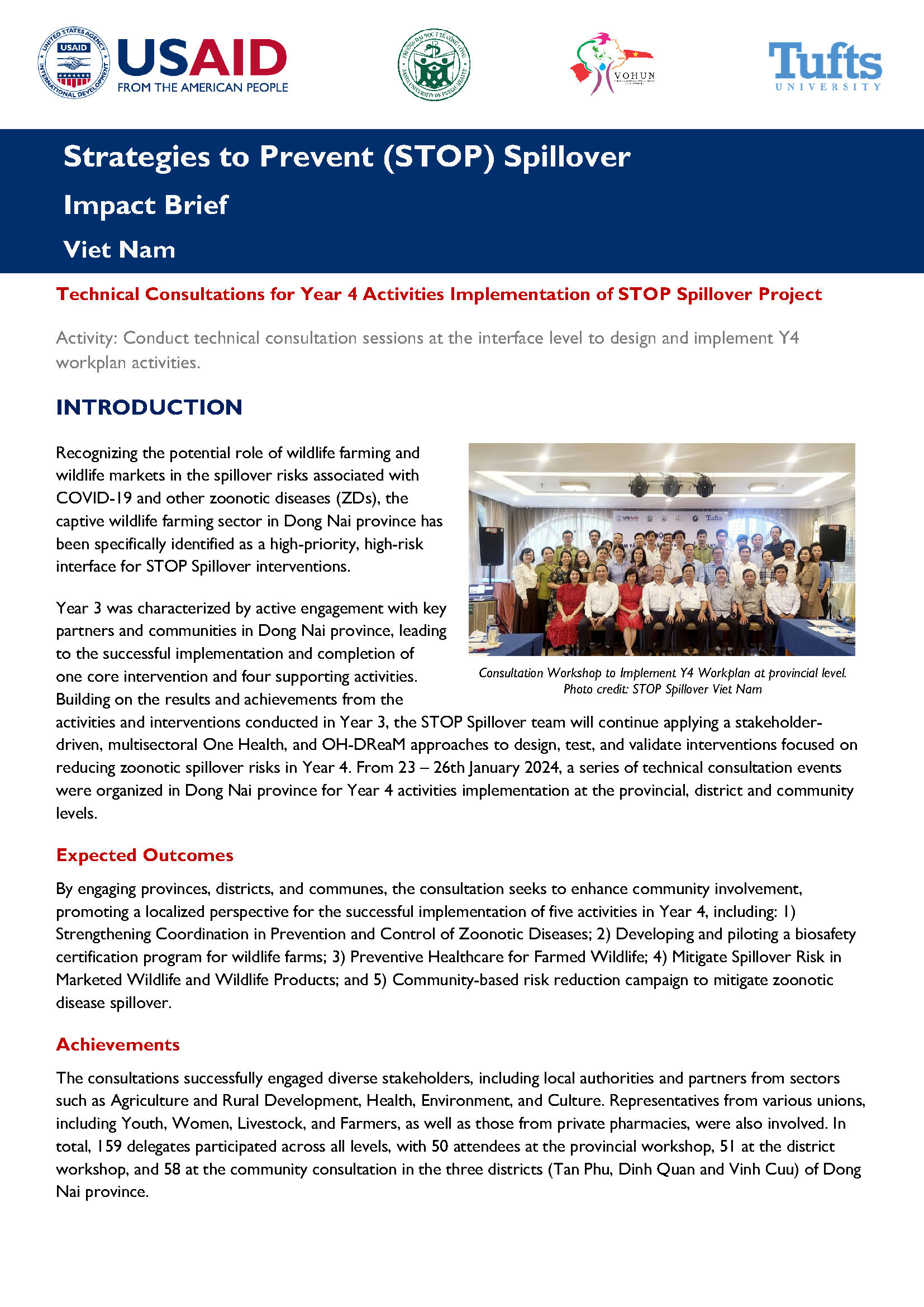
Impact Brief: Technical Consultations for Year 4 Activities Implementation
This brief describes a series of technical consultation events held with stakeholders in Dong Nai province on topics such as strengthening coordination to prevent and control zoonotic diseases, developing and piloting a biosafety certification program for wildlife farms, preventive healthcare for farmed wildlife, and a community-based risk reduction campaign to mitigate zoonotic disease spillover.
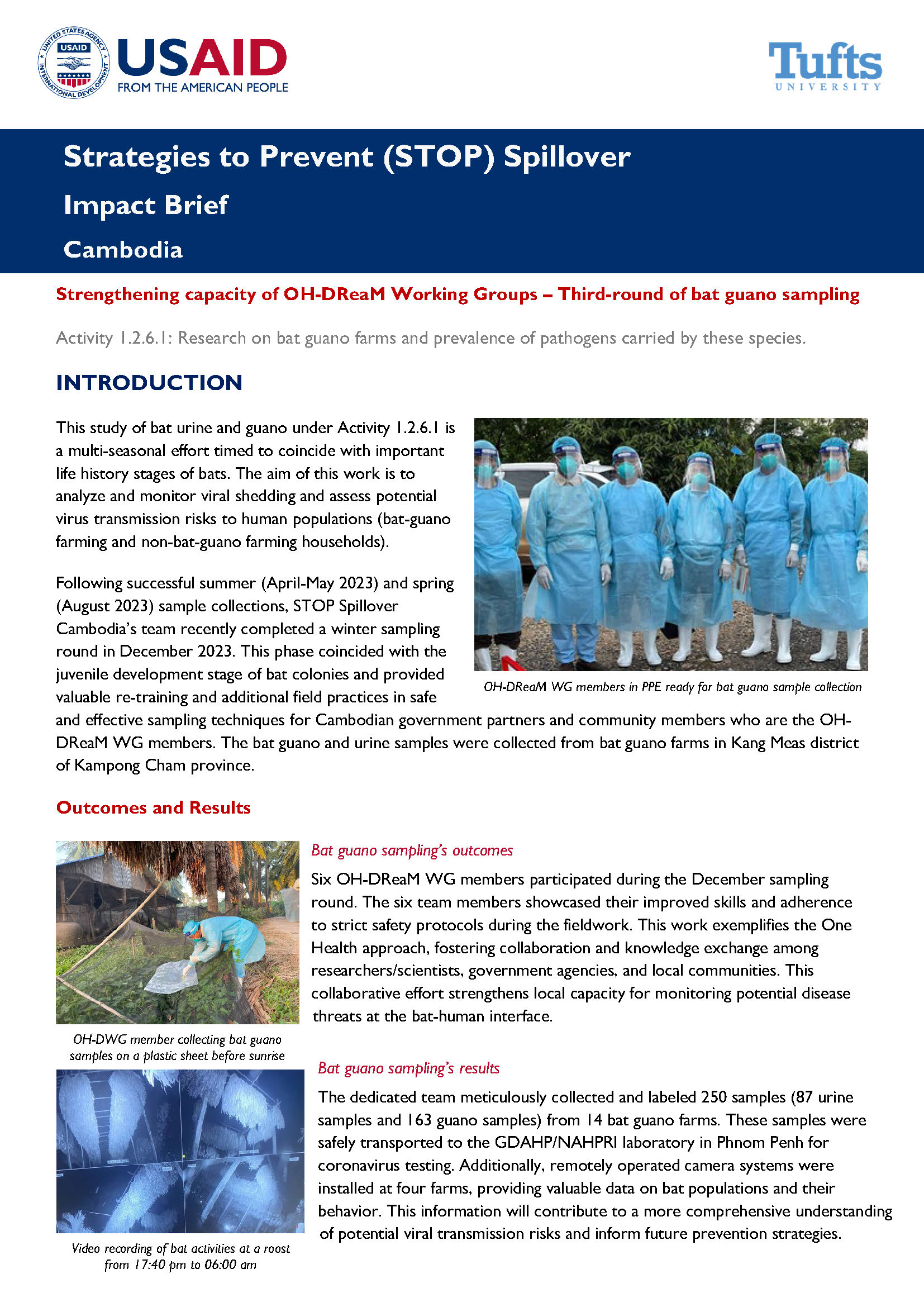
Impact Brief: Strengthening Capacity of OH-DReaM Working Groups: Third Round of Bat Guano Sampling
This brief describes a study of bat urine and guano that focused on analyzing and monitoring viral shedding and assessing potential virus transmission risks to human populations (i.e., bat-guano farming and non-bat-guano farming households).
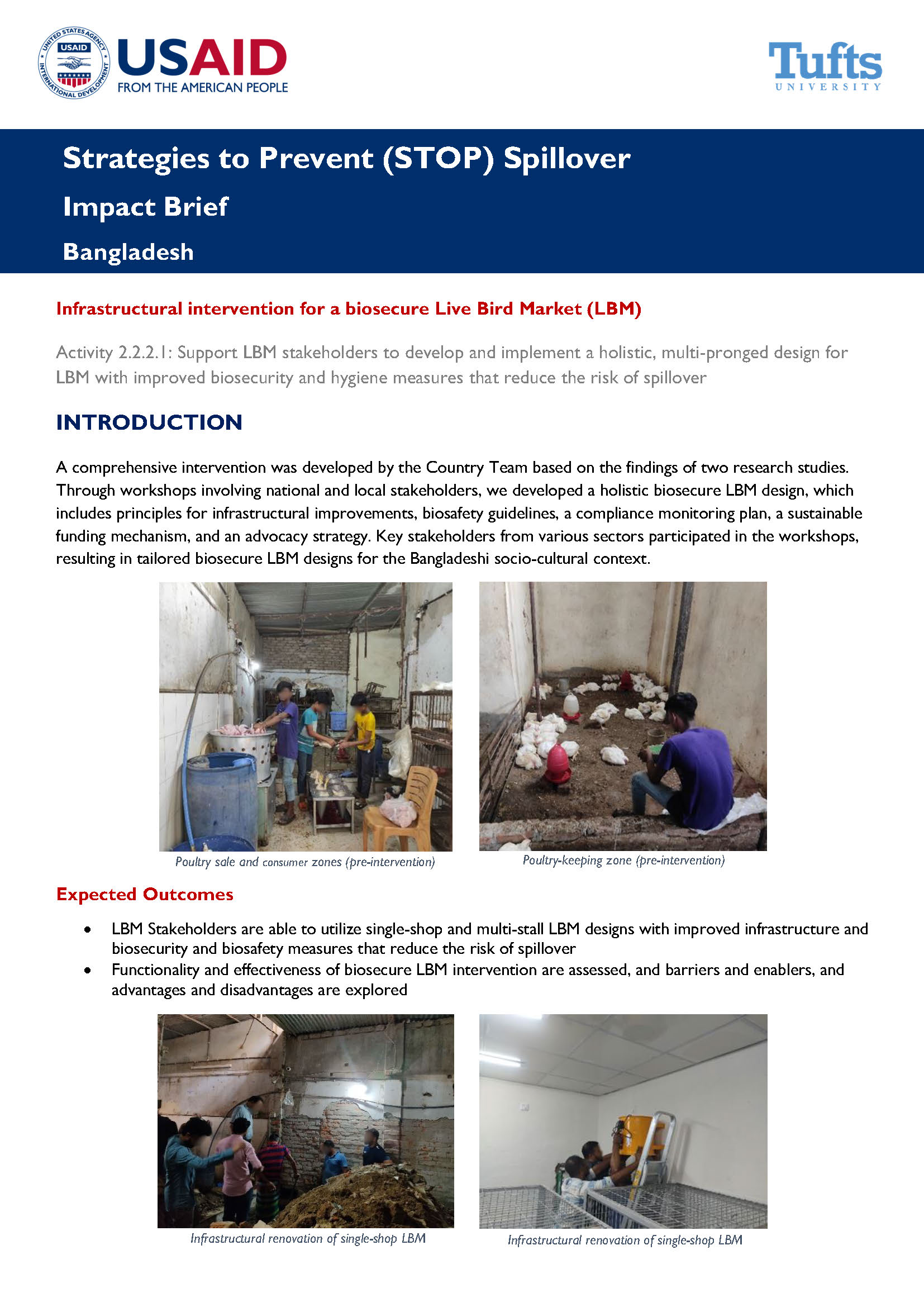
Impact Brief: Infrastructural Intervention for a Biosecure Live Bird Market
This brief summarizes an infrastructural intervention focused on collaborating with national and local stakeholders to develop and implement a holistic, multi-pronged design for a live bird market with improved biosecurity and hygiene measures that reduce the risk of spillover.
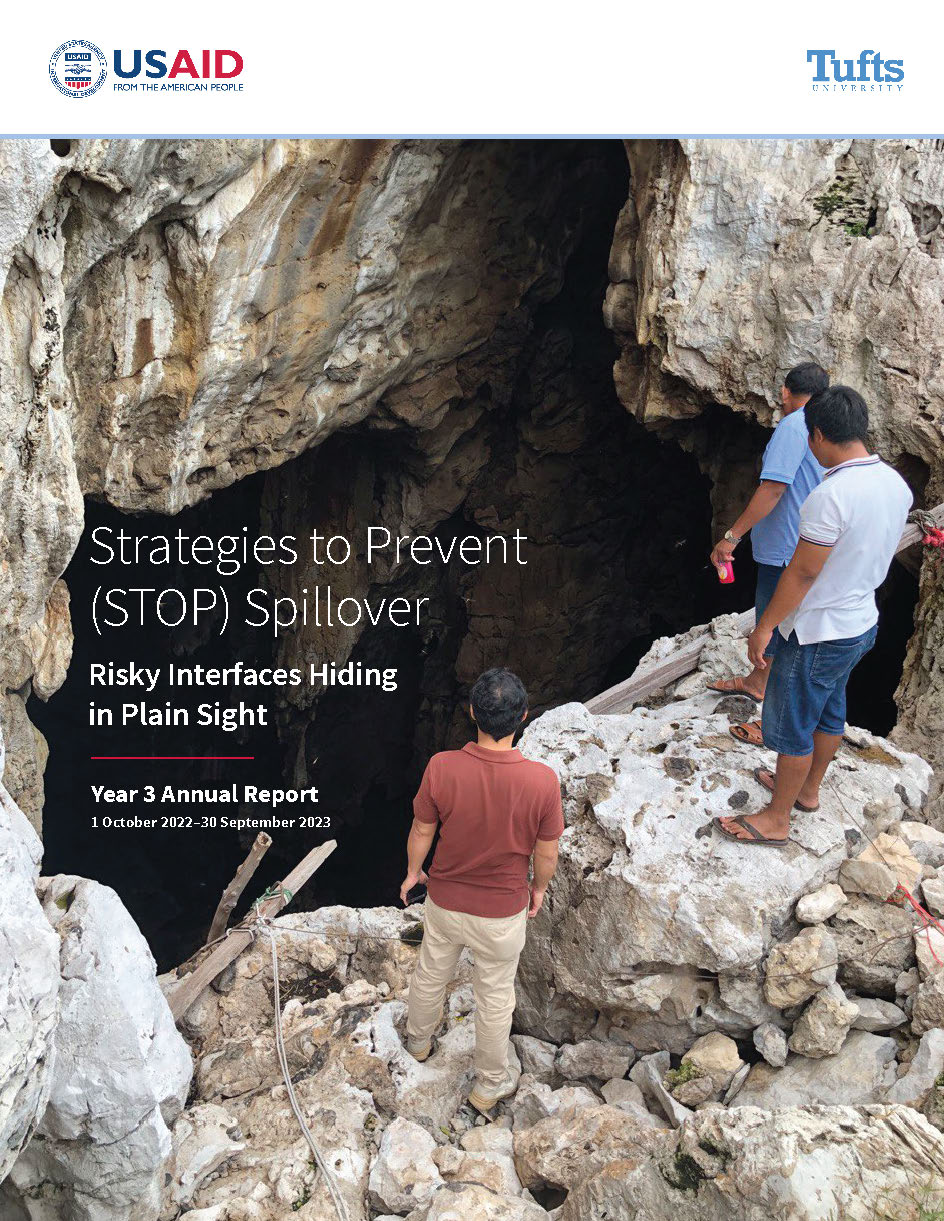
This document is the third annual report from STOP Spillover. In Project Year 3, STOP Spillover supported seven USAID priority countries to enhance understanding of the causes of viral emergence from animals to humans and to use this information to reduce risk of zoonotic viral spillover, amplification, and spread.
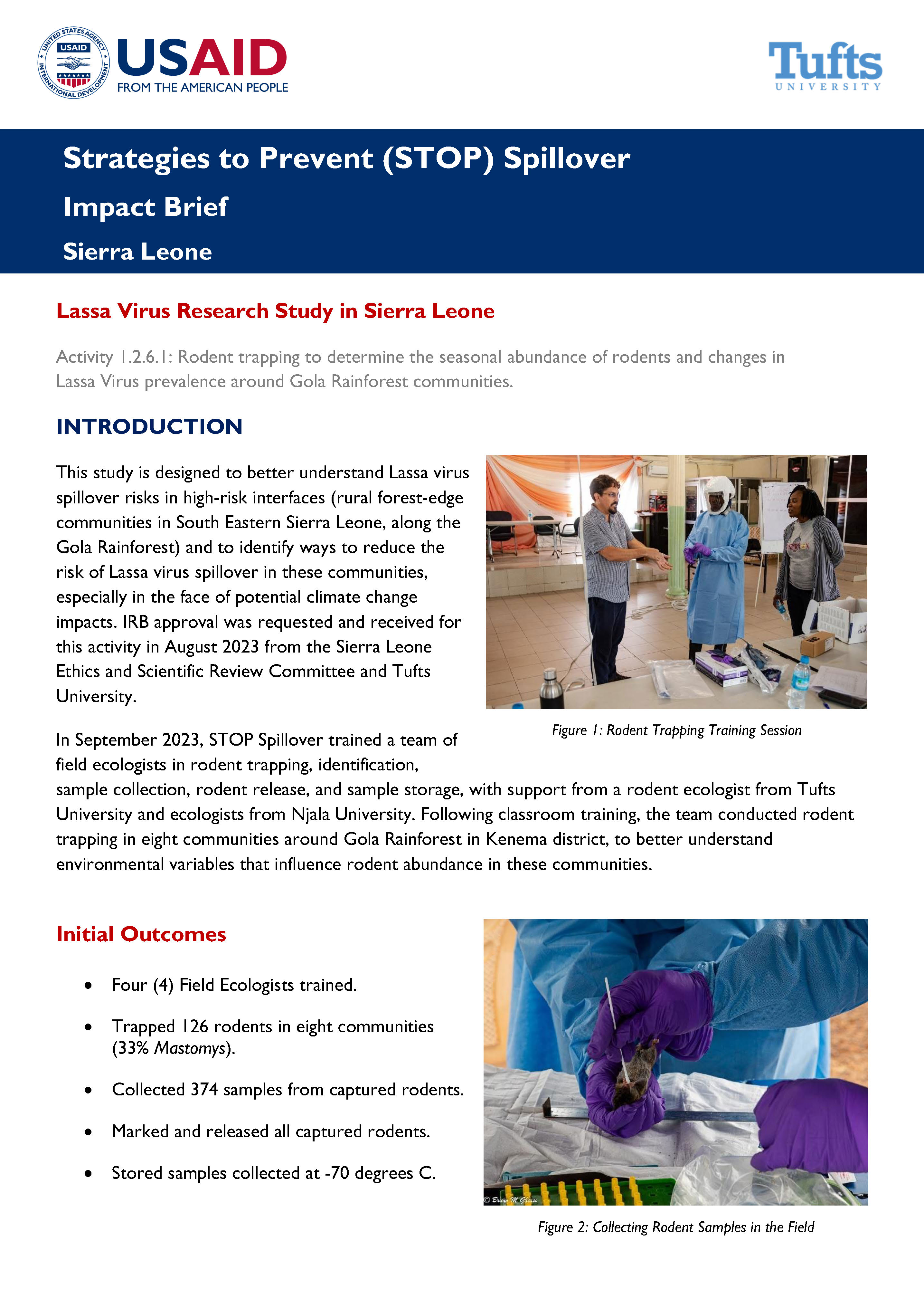
This brief summarizes a study to better understand Lassa virus spillover risks in high-risk interfaces in rural forest-edge communities in southeastern Sierra Leone and to identify ways to reduce the risk of Lassa virus spillover in the communities.
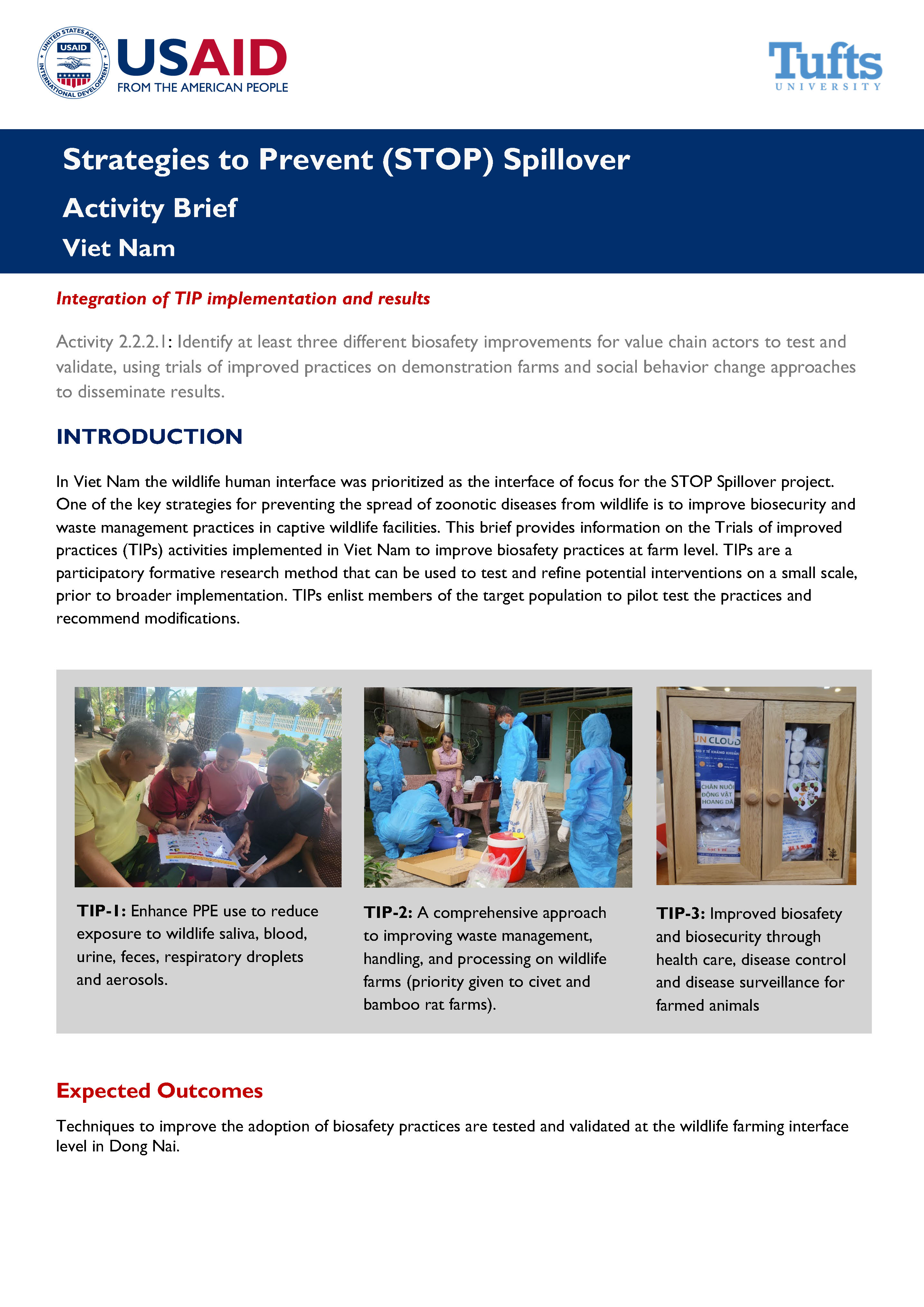
Activity Brief: Integration of TIPS Implementation and Results in Viet Nam
This brief describes the Trials of Improved Practices (TIPs) activities implemented in Viet Nam to improve biosafety practices at the farm level.
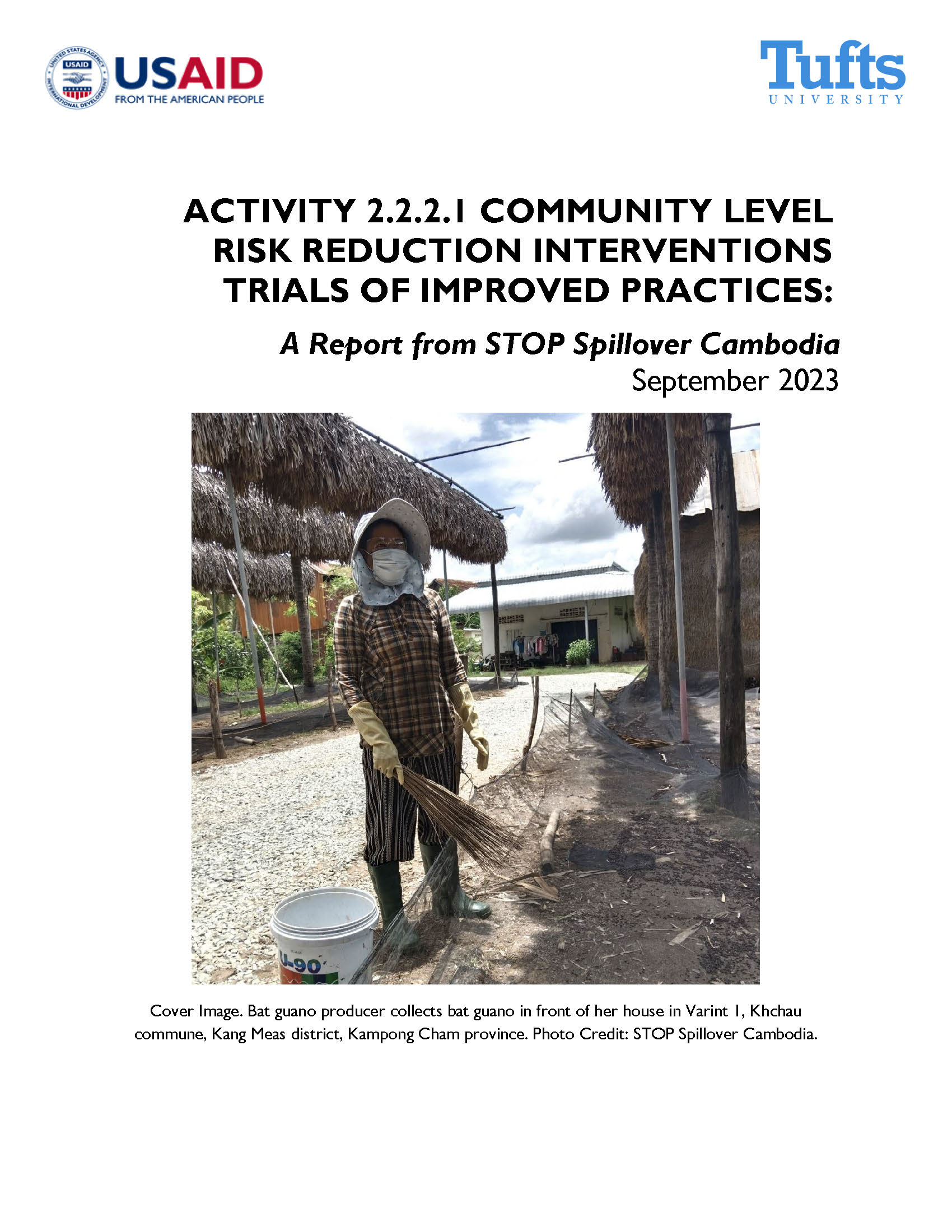
This report describes formative research conducted by STOP Spillover in Cambodia in which bat guano producing families and their neighbors in a high-risk bat-human interface tried to implement or improve their practice of priority risk reduction behaviors.
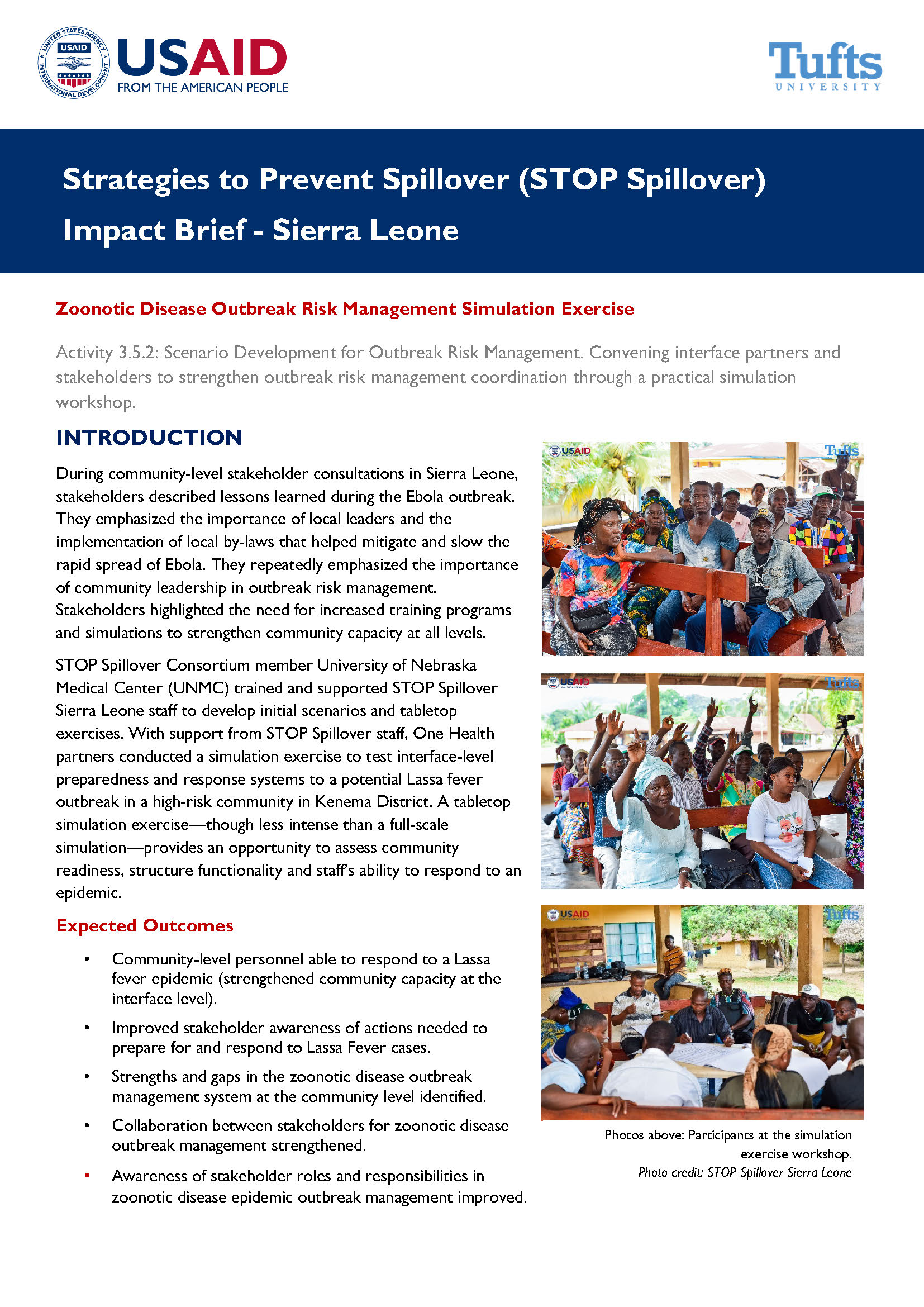
Impact Brief: Zoonotic Disease Outbreak Risk Management Simulation Exercise
This report summarizes a tabletop simulation exercise that STOP Spillover Sierra Leone staff and One Health partners conducted to test interface-level preparedness and response systems to a potential Lassa fever outbreak in a high-risk community in Kenema District in Sierra Leone.
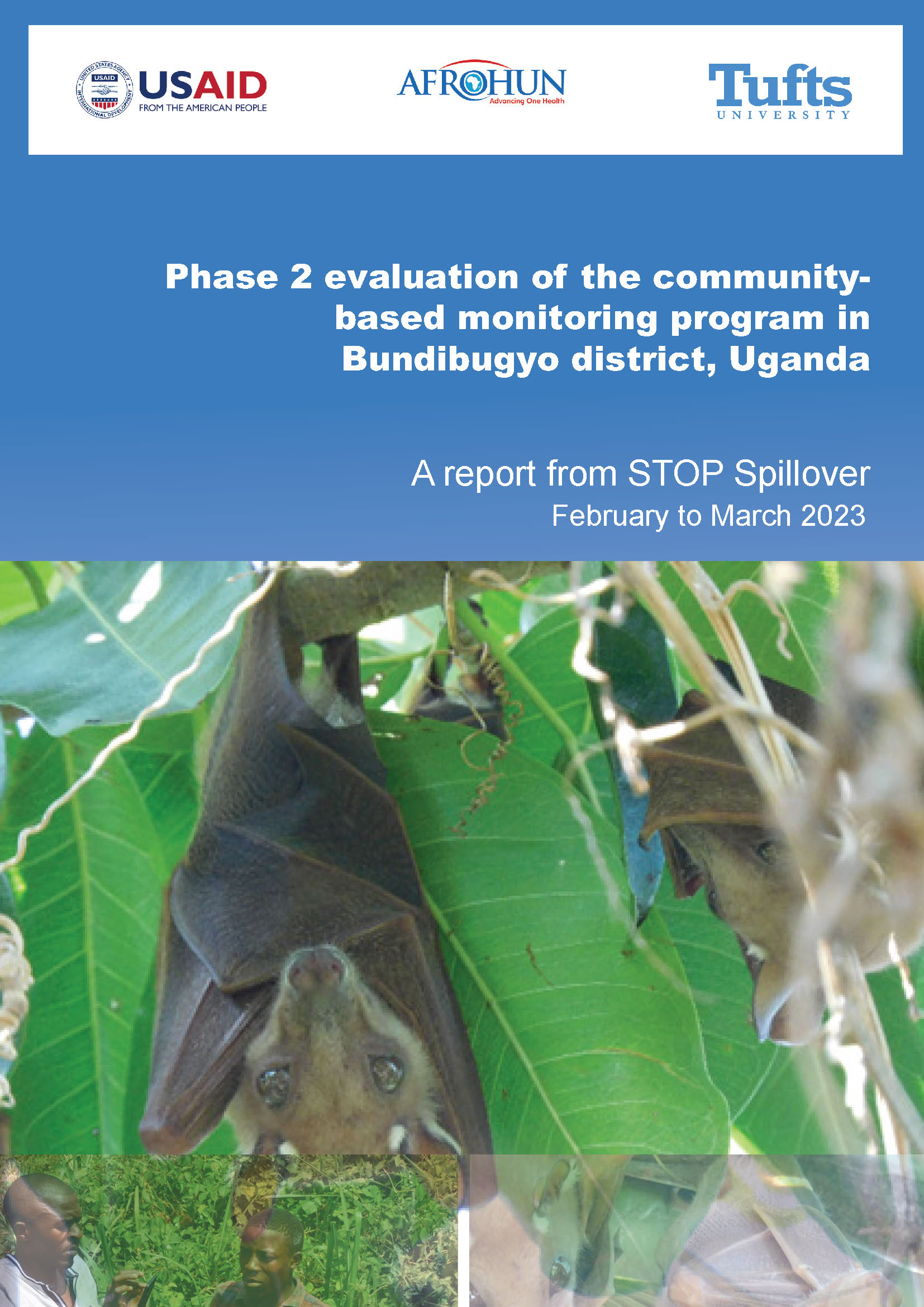
Phase 2 Evaluation of the Community-based Bat Monitoring Program in Bundibugyo District, Uganda
This report presents the community bat-monitoring approach and the results obtained from the two-month bat-human interaction monitoring period in Bundibugyo district.
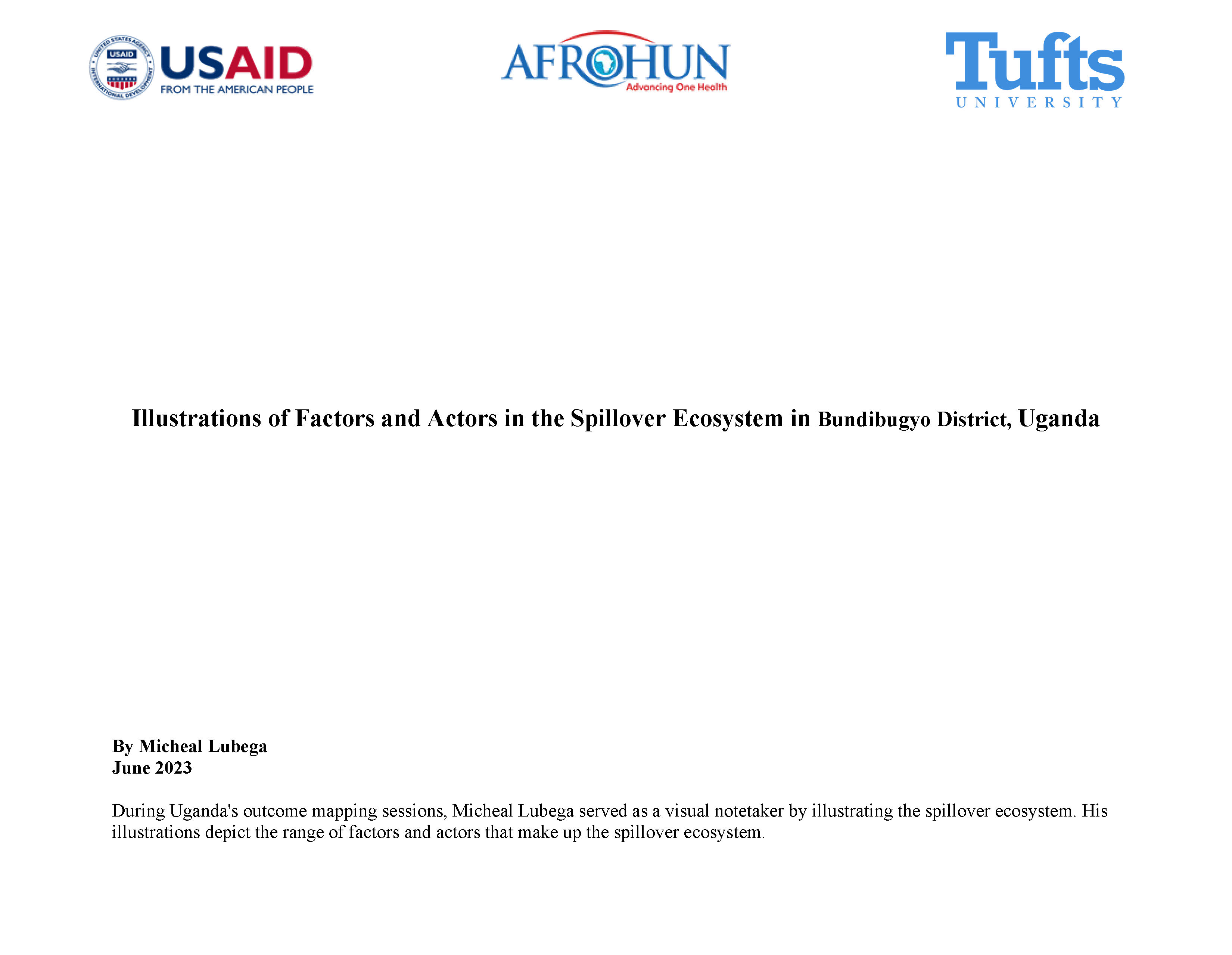
Illustrations of Factors and Actors in the Spillover Ecosystem in Bundibugyo District, Uganda
These illustrations were created during Uganda's outcome mapping sessions, when Micheal Lubega served as a visual notetaker by illustrating the spillover ecosystem. His illustrations depict the range of factors and actors that make up the spillover ecosystem.
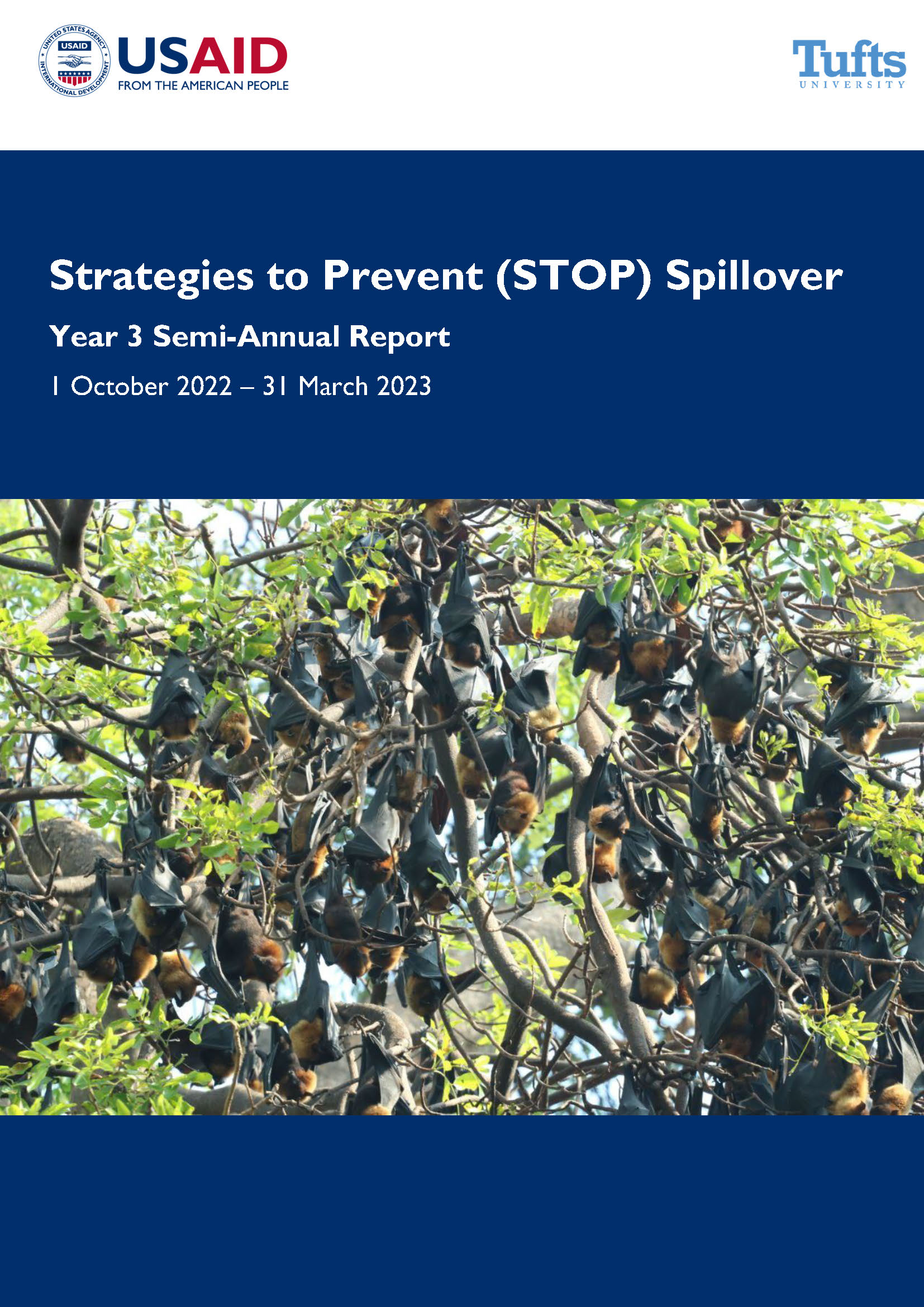
STOP Spillover Year 3 Semi-Annual Report (1 October 2022 – 31 March 2023)
This report documents progress made during the first half of Project Year 3. During this period, multiple country teams were actively engaged in formative research projects that generated baseline and contextual knowledge of targeted spillover ecosystems.
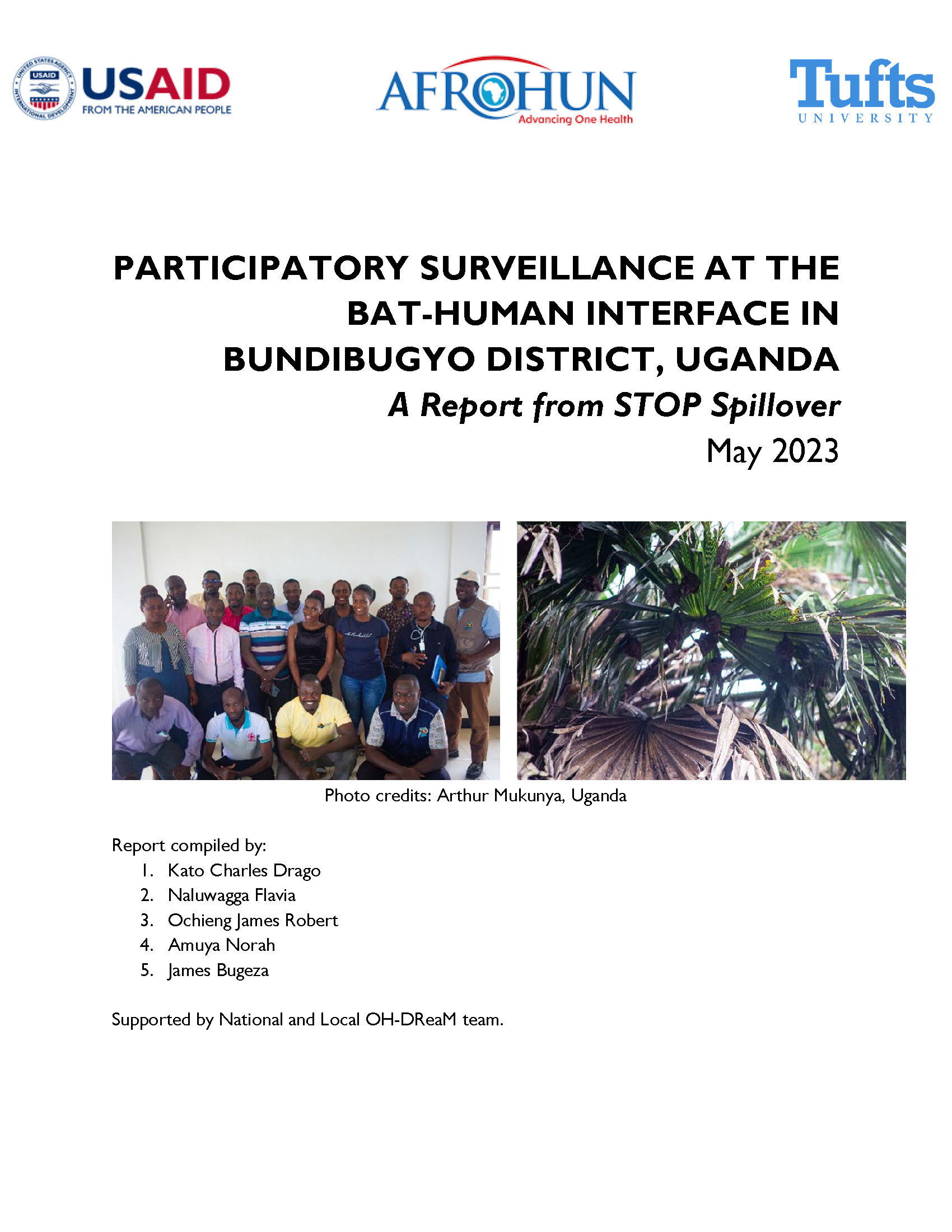
Participatory Surveillance at the Bat-Human Interface in Bundibugyo District, Uganda
This report summarizes the project’s participatory surveillance approach to investigate bat host ecology (based on community knowledge) and human behavioral risk factors associated with human-bat interaction to inform the development of the community-based bat-human interface monitoring program.
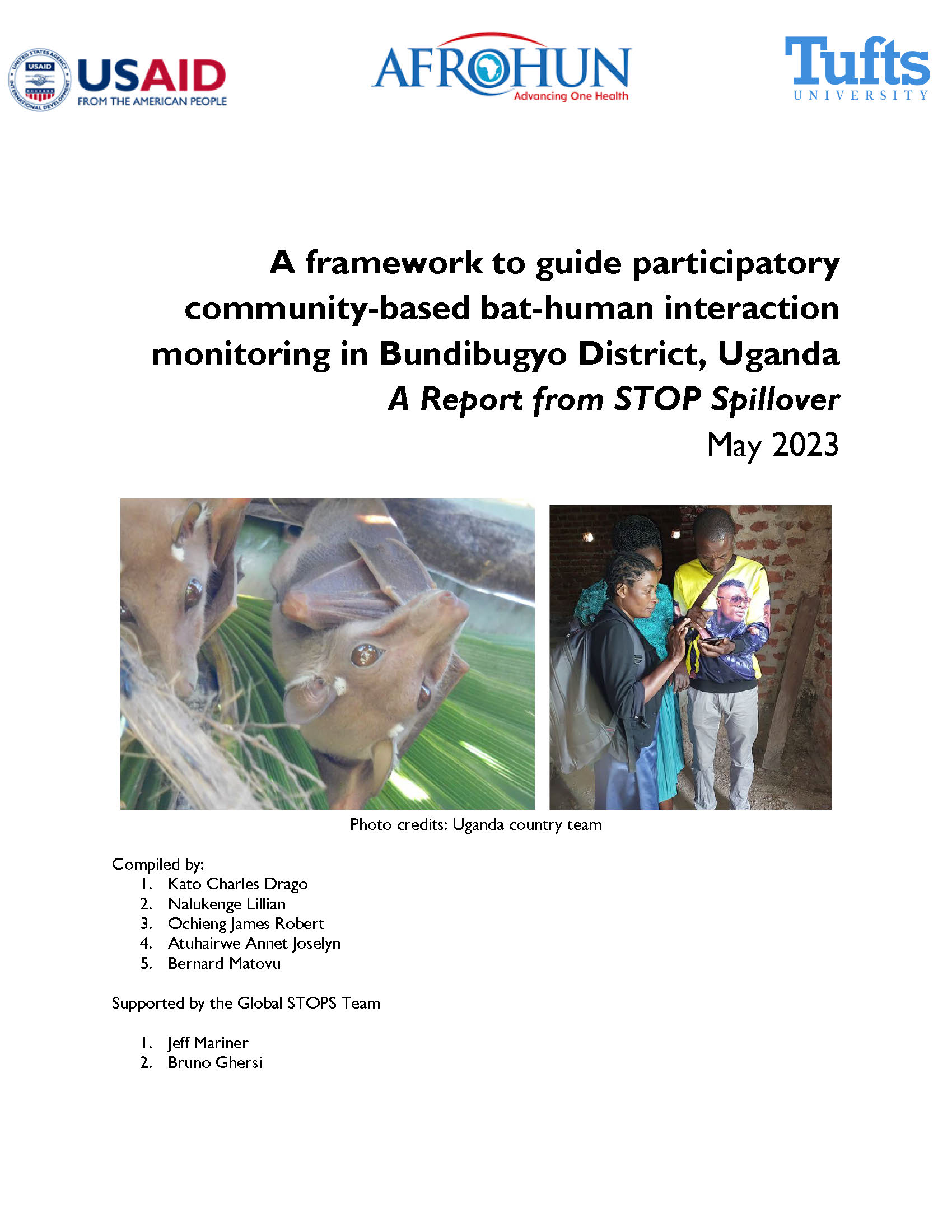
This document describes the activities of the bat-human interaction monitoring program in Bundibugyo district, the data collected and indicators monitored, and the plan for data processing, analysis, and reporting.
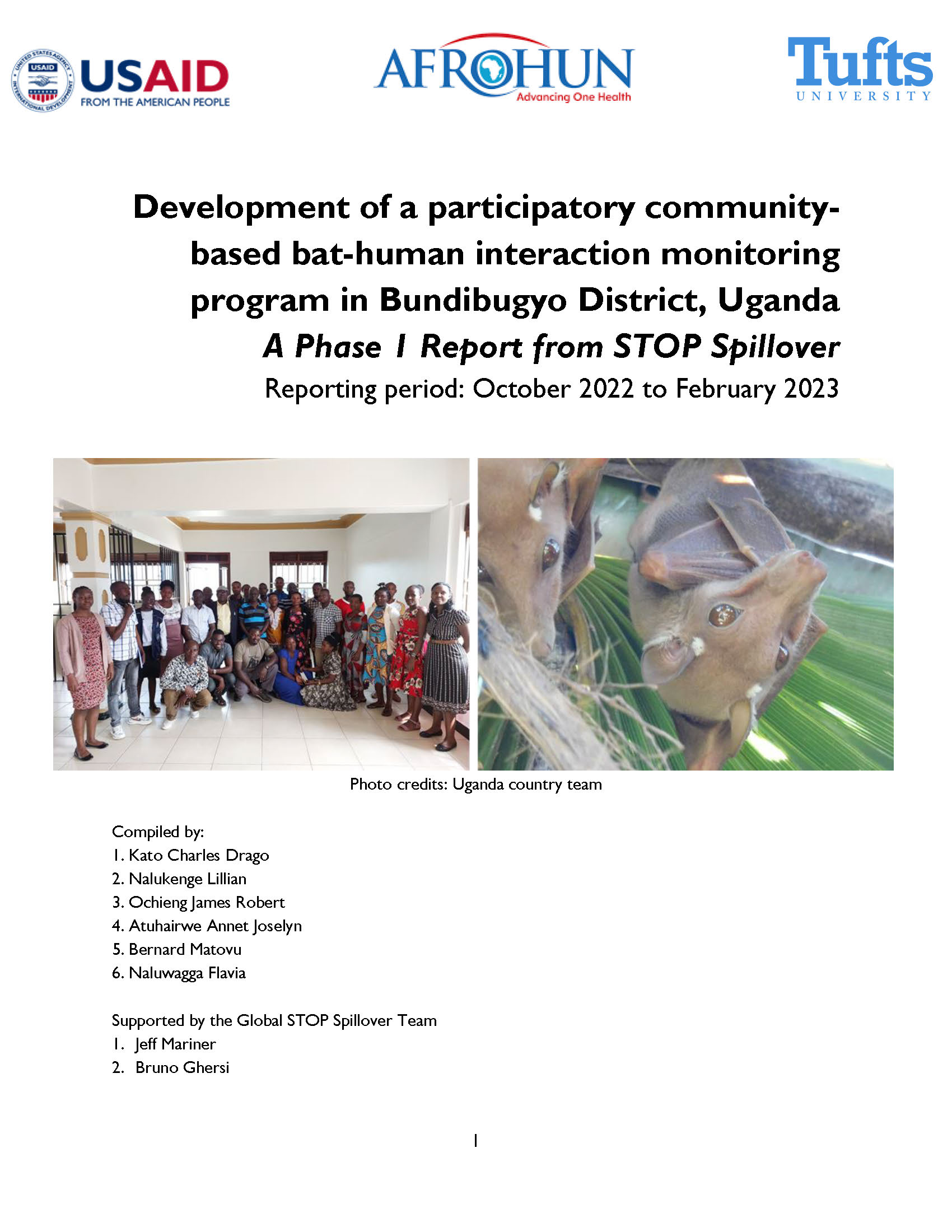
This report summarizes Phase I of the participatory community-based bat-human interaction monitoring program in Bundibugyo District, Uganda from October 2022 to February 2023.
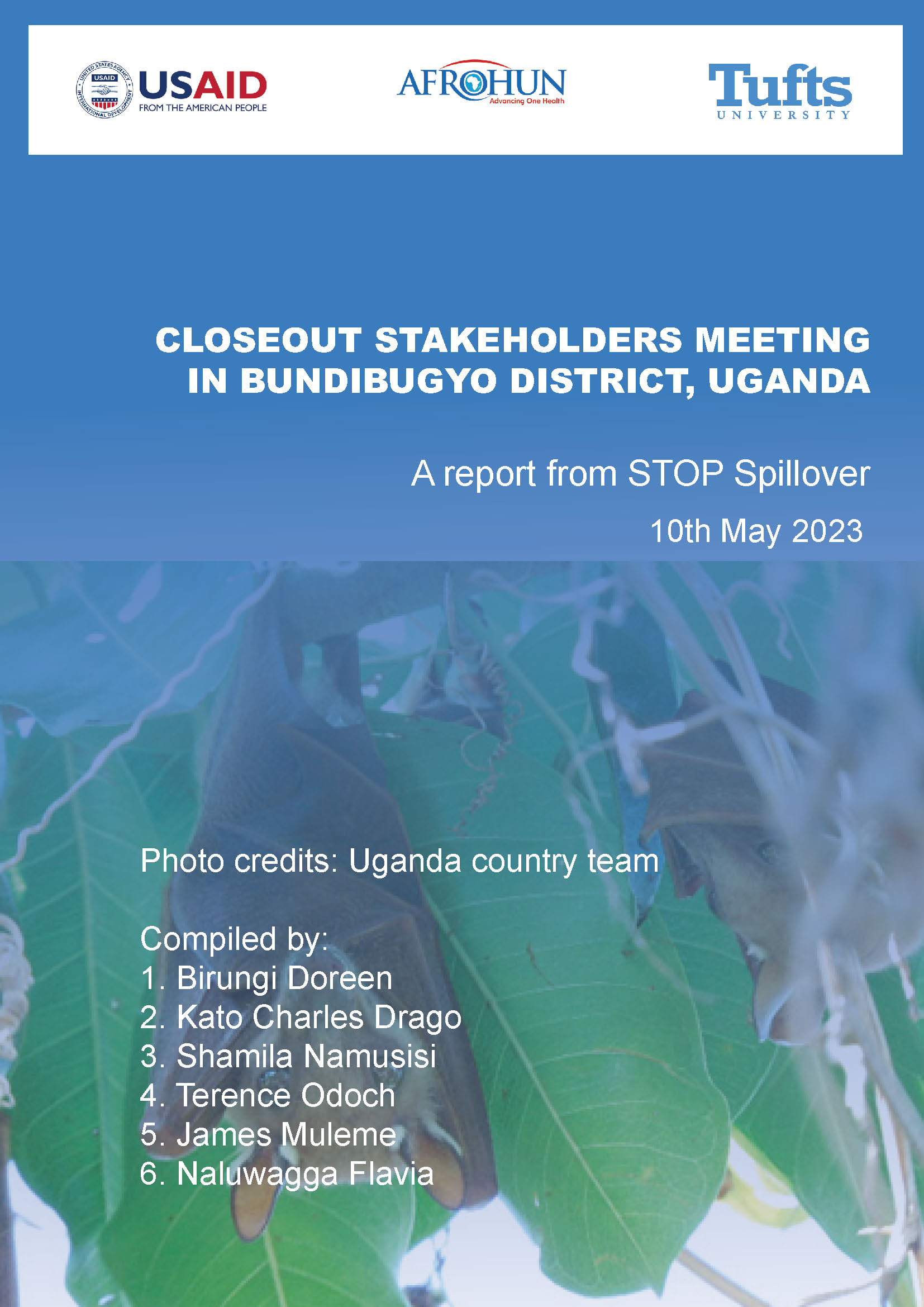
Closeout Stakeholders’ Meeting in Bundibugyo District, Uganda
This document summarizes highlights of the STOP Spillover Uganda team’s final stakeholder meeting with partners in Bundibugyo district in May 2023.
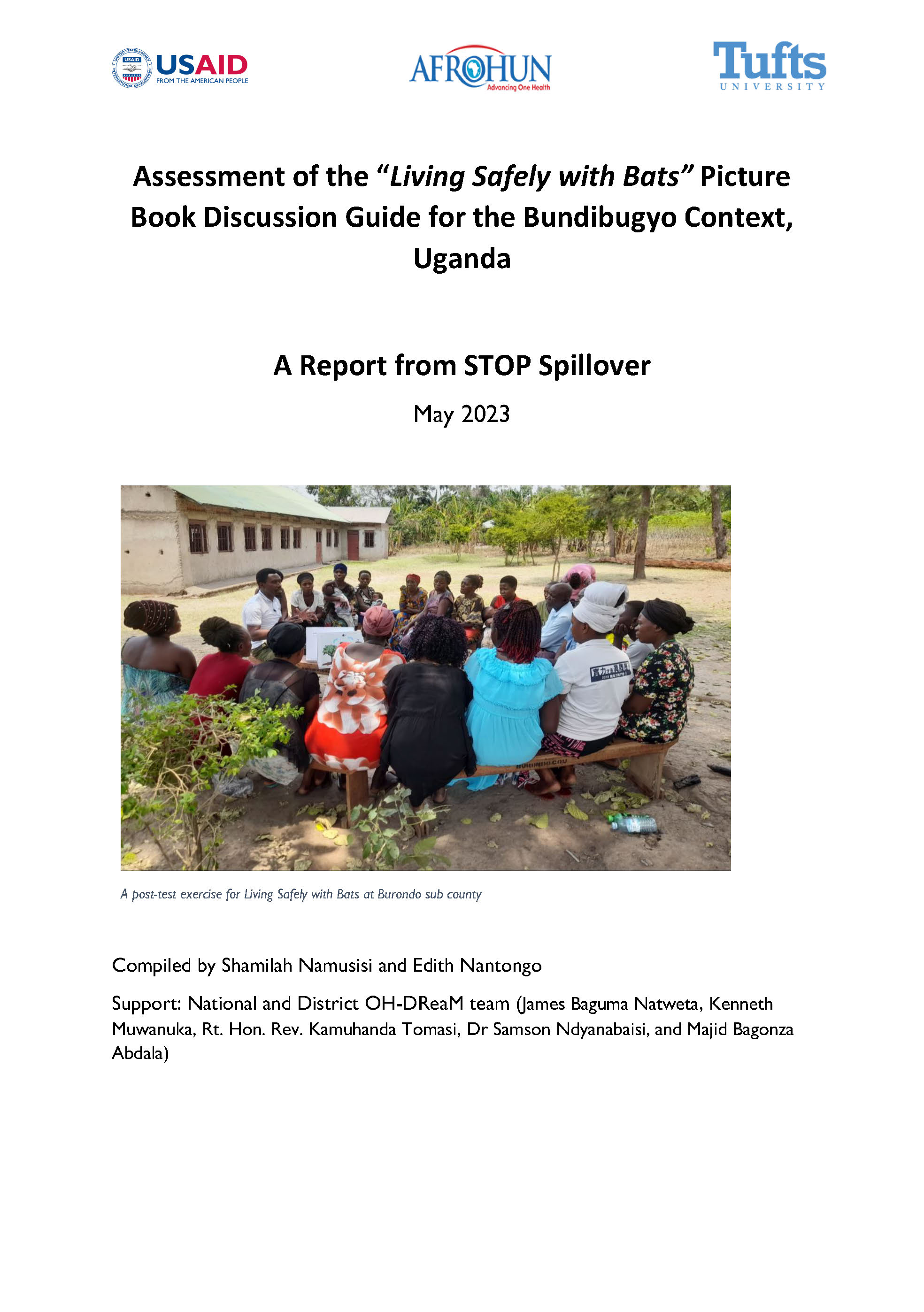
This document summarizes the results of an exercise that assessed the usability and appropriateness of the Living Safely with Bats community discussion guide for the Bundibugyo district.
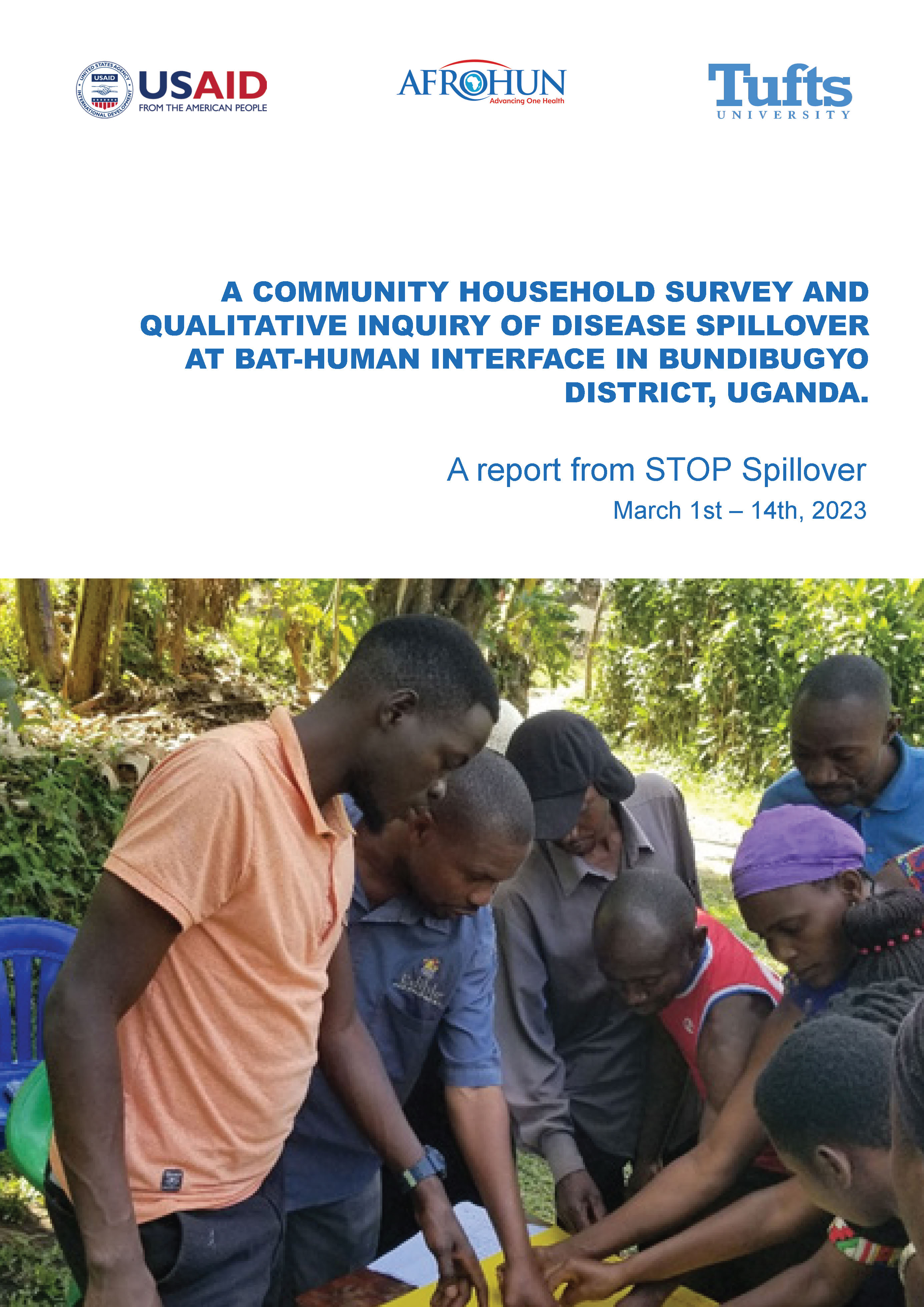
This report summarizes the results of community surveys and focus group discussions conducted in Bundibugyo district that explored the behavioral, socio-cultural, gender-specific, and economic risk factors associated with bat-human interaction in the study areas in the district.
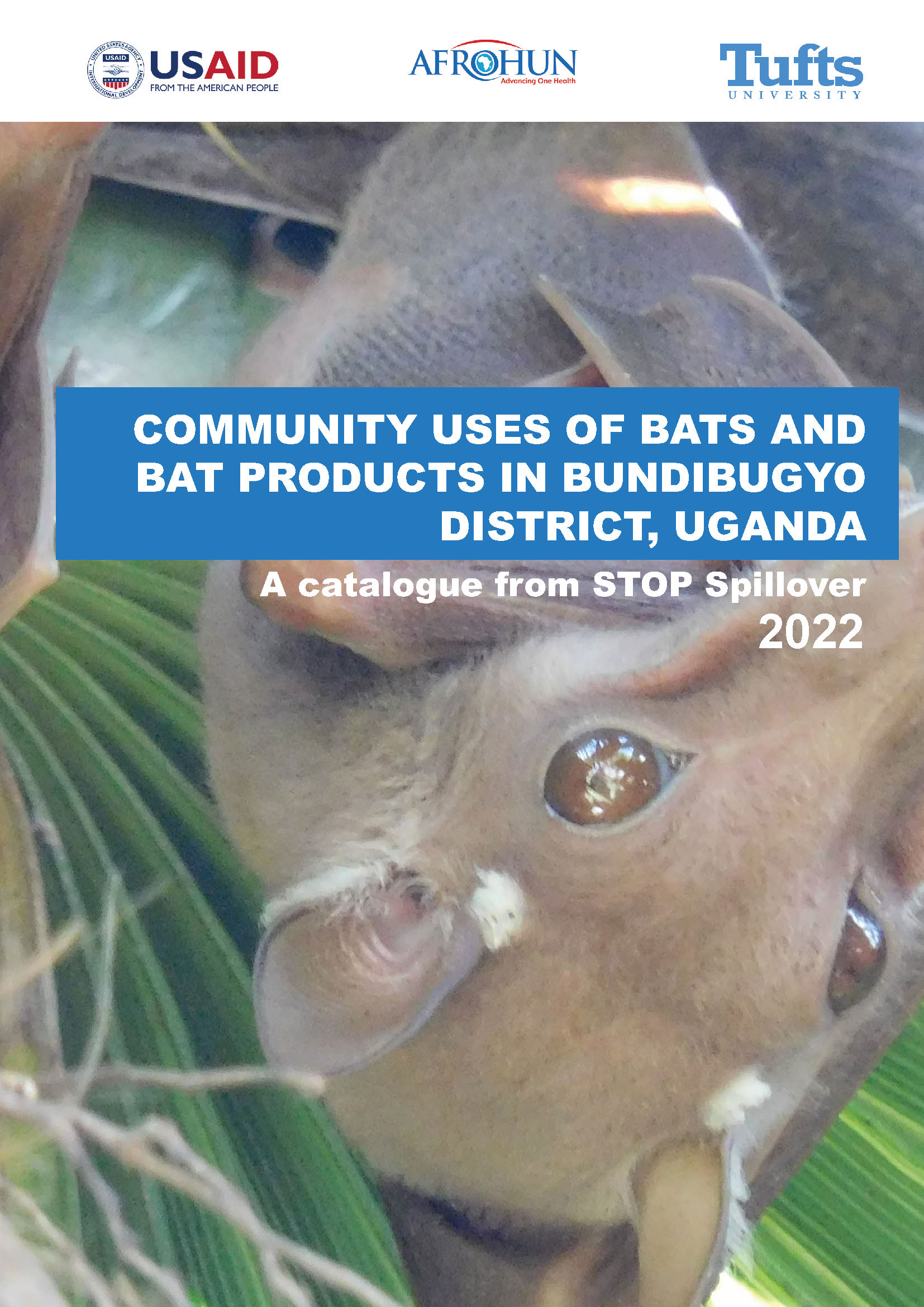
This resource documents bat-human interactions, myths, and the perceived value of bats in Bundibugyo district, including farming, bat hunting, fetching water, and the use of bats in traditional medicine, agriculture, and income generation.
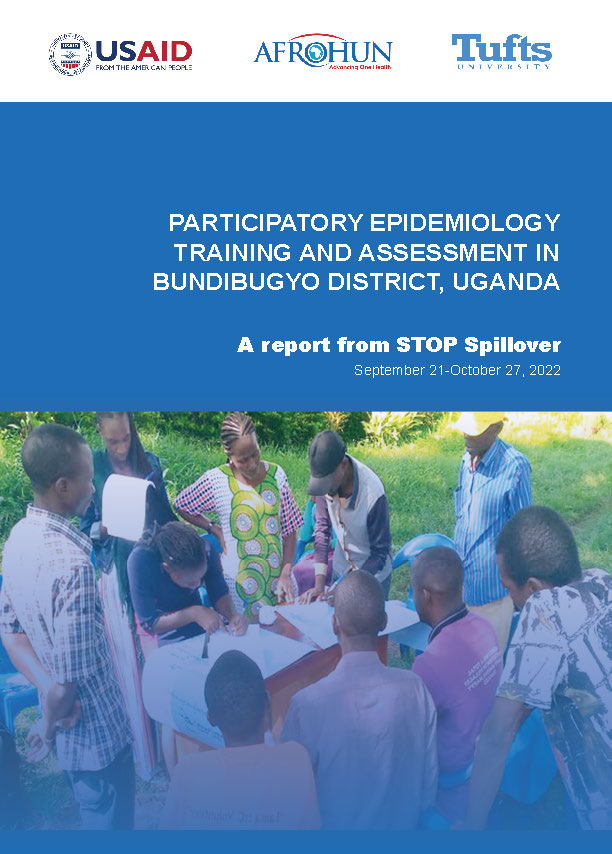
Participatory Epidemiology Training and Assessment in Bundibugyo District, Uganda
This document summarizes the results of a training to equip community members with knowledge and skills in participatory epidemiology and an assessment to better understand the social, behavioral, cultural, and traditional practices that increase human-bat interactions and the risks of spillover.
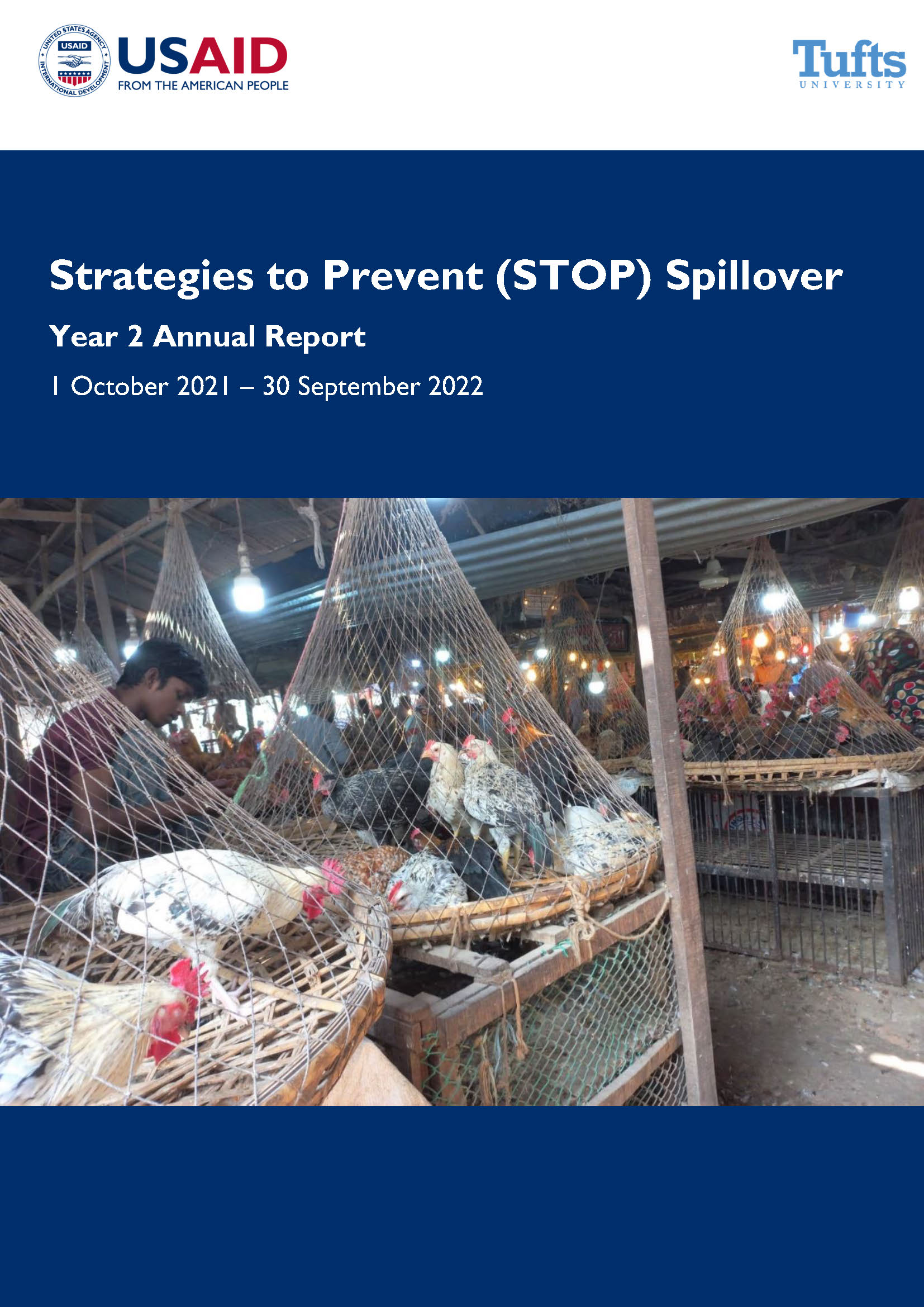
STOP Spillover Year 2 Annual Report (1 October 2021‒30 September 2022)
This document is the second annual report from STOP Spillover. Project Year 2 focused primarily on selecting and designing interventions and aligned studies to fill knowledge gaps to support intervention design.